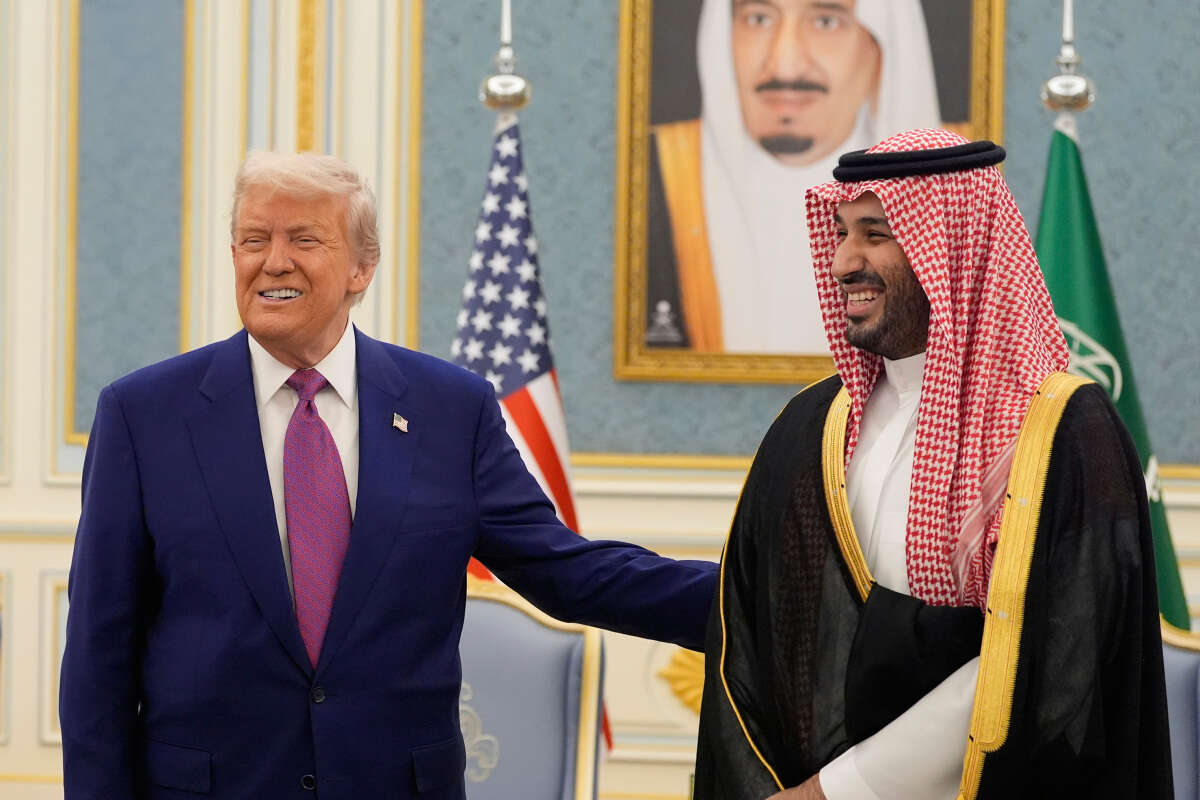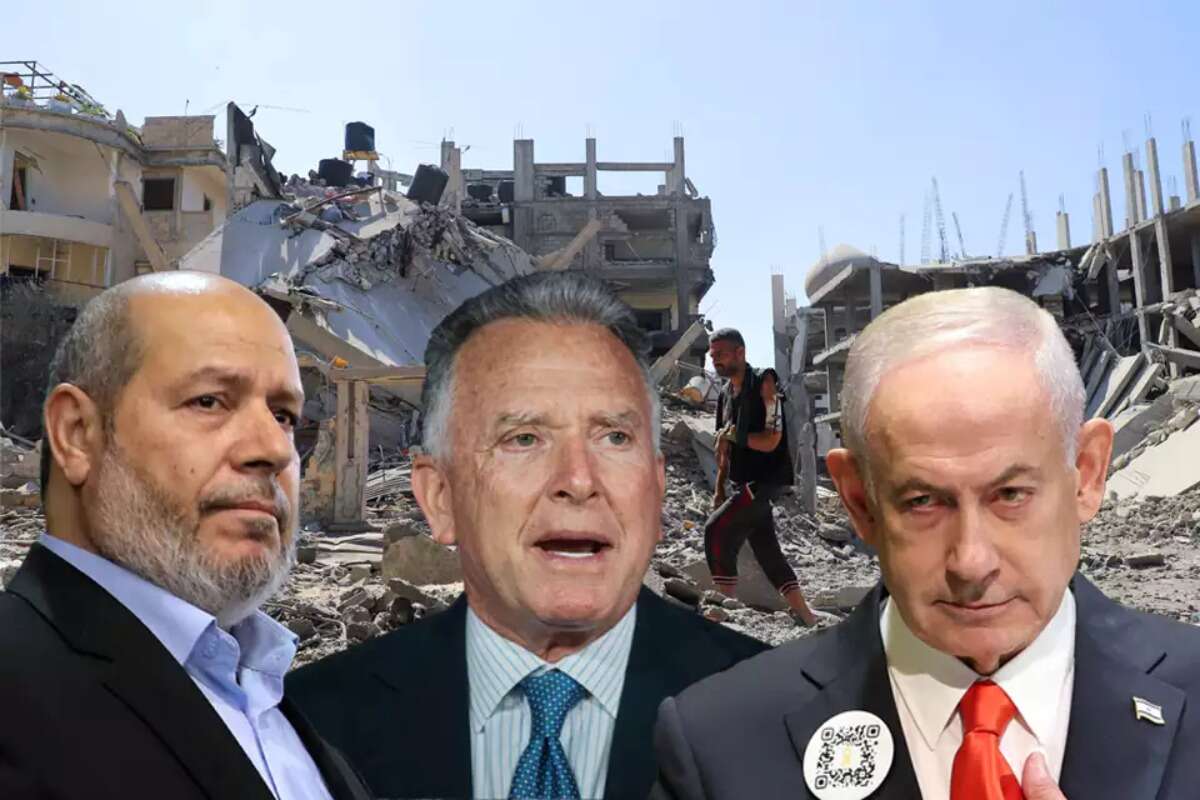Intensive efforts are underway between the US administration and advisers to Crown Prince Mohammed bin Salman, aimed at reaching a historic package deal containing a US-Saudi defense agreement and, alongside it, the launch of talks on partial normalization with Israel. The immediate target is the crown prince’s visit to the White House this coming Tuesday, a visit with far-reaching regional implications.
Even if trilateral negotiations are formally announced, expectations are that the initial outcomes will be economic and commercial rather than political, largely because of Saudi displeasure with elements of Netanyahu’s coalition.
 Bin Salman, Trump and Netanyahu AFP, AP, Reuters, Yonatan Sindel/Flash90
Bin Salman, Trump and Netanyahu AFP, AP, Reuters, Yonatan Sindel/Flash90
Progress on key disputes
According to diplomatic sources familiar with the discussions, the sides have made significant progress and potential solutions are emerging on the main points of disagreement. The central issue is Saudi Arabia’s desire to establish a nuclear facility on its soil that would include an independent uranium-enrichment capability.
Former National Security Council head Meir Ben-Shabbat wrote that Mohammed bin Salman justifies this demand in light of senior Iranian officials’ declarations of determination to rebuild Iran’s nuclear project. One option being discussed is a US-built nuclear facility in Saudi Arabia that would operate with American personnel and American security oversight. It remains unclear whether Israel would accept such an arrangement, but talks are advancing in a way that leaves the door open to a civilian nuclear facility in Saudi Arabia, though not in the immediate term.
The crown prince’s visit to Washington is intended to culminate in a defense pact similar to the one the US signed with Qatar, and on this issue there is almost complete agreement with the Americans. Moreover, the Saudis view Israel as a partner in this framework, which aligns with the joint regional command structure headed by US Central Command, known as CENTCOM.
Saudi Arabia has expressed confidence in Israel’s proven capabilities and its willingness to act independently, as demonstrated in strikes against Iranian and Qatari targets. As Israel Hayom has previously reported, Saudi military helicopters intercepted Iranian UAVs en route to Israel during the June conflict with Iran.
F-35 and Israel’s Qualitative Military Edge
A major announcement is also expected on large-scale defense procurement agreements, primarily the acquisition of F-35 fighter jets. The Pentagon has already approved the sale of F-35s to Saudi Arabia, which still requires the approval of the US Senate and the signature of President Trump.
 F-35 jet. Photo: IDF Spokesperson
F-35 jet. Photo: IDF Spokesperson
Until now, the F-35 has been sold to 19 countries, most of them Western. In the Middle East, only Israel currently operates the advanced aircraft. Although the F-35 is considered a key component of Israel’s Qualitative Military Edge, Israel possesses an upgraded model equipped with unique systems.
Diplomatic officials say the US guarantees to preserve Israel’s qualitative military edge, enshrined in legislation, are extensive. According to those officials, this aligns with the shared Israeli and American goal of establishing a new, long-term security framework that includes expanded cooperation in developing advanced weapons systems. In practice, this would allow the Israel Defense Forces to access qualitative advantages already in the earliest development stages of cutting-edge military technologies, together with the US military, well before other countries that purchase American weapons.
Palestinian statehood Issue resolved
Another issue that has effectively been resolved is the requirement for progress toward a Palestinian state. This clause was already included in Trump’s earlier plan, and it is now being implemented through a draft resolution that the UN Security Council is expected to vote on Monday, one day before the meeting between President Trump and the Saudi crown prince.
 President Donald Trump and Saudi Crown Prince Mohammed bin Salman gesture as they meet delegations at the Royal Palace in Riyadh, Saudi Arabia, Tuesday, May 13, 2025 AP
President Donald Trump and Saudi Crown Prince Mohammed bin Salman gesture as they meet delegations at the Royal Palace in Riyadh, Saudi Arabia, Tuesday, May 13, 2025 AP
A diplomatic source confirmed that, at Saudi request, the draft resolution includes several changes from the original Trump plan, the most significant being that the clause has been moved to the top of the text instead of appearing as point 19 in the Trump proposal.
Once the meeting between the two leaders was set, it was clear that Israel would be part of the agenda, with only the details left to determine. Now it appears those details are nearing completion. If successful, this would mark a major breakthrough in Israel’s relations with the Arab world, provided the process is not halted or derailed as happened on October 7.
Eastern Gaza Strip plan
The next stage of implementing Trump’s plan is approaching and is moving forward along two parallel tracks. Political and security officials familiar with the behind-the-scenes diplomatic process describe two lines of effort:
The first is practical: establishing humanitarian zones in areas under Israeli control.
The second is diplomatic: preparing to open negotiations on the second phase, which involves disarming Hamas and transferring authority over the entire Gaza Strip to an international committee.
The Security Council resolution expected Monday is meant to accelerate the formation of a multinational force. But a fundamental problem remains: Hamas’ refusal to disarm and the reluctance of involved states to send troops as long as Hamas retains its weapons.
For this purpose, President Trump’s envoy Steve Witkoff is scheduled to meet with Khalil al-Hayya, head of Hamas’ negotiation team. The proposal on the table would transfer the weapons to the Palestinian force being trained under American supervision in Jordan. Hamas’ leadership is divided on the issue and, at most, is willing to hand over rocket weapons to an Arab entity.
 Netanyahu, Witkoff and al-Hayya. Photo: AP/AFP/Reuters AP/AFP/Reuters
Netanyahu, Witkoff and al-Hayya. Photo: AP/AFP/Reuters AP/AFP/Reuters
On the second track, reconstruction and civilian management of the Palestinian population in the area under Israeli control, known as the Eastern Gaza Strip, Washington intends to begin transferring certain civilian authorities soon. This would initially be handled through the Civil-Military Coordination Center, or CMCC, which has been established in Kiryat Gat.
The Americans are deeply involved in establishing the humanitarian zones in areas under Israeli control, including a major one in the southern part of the strip and several smaller ones in both the south and the north. Several countries are participating in creating these areas, including Jordan, the United Arab Emirates, the US, Morocco and others.
